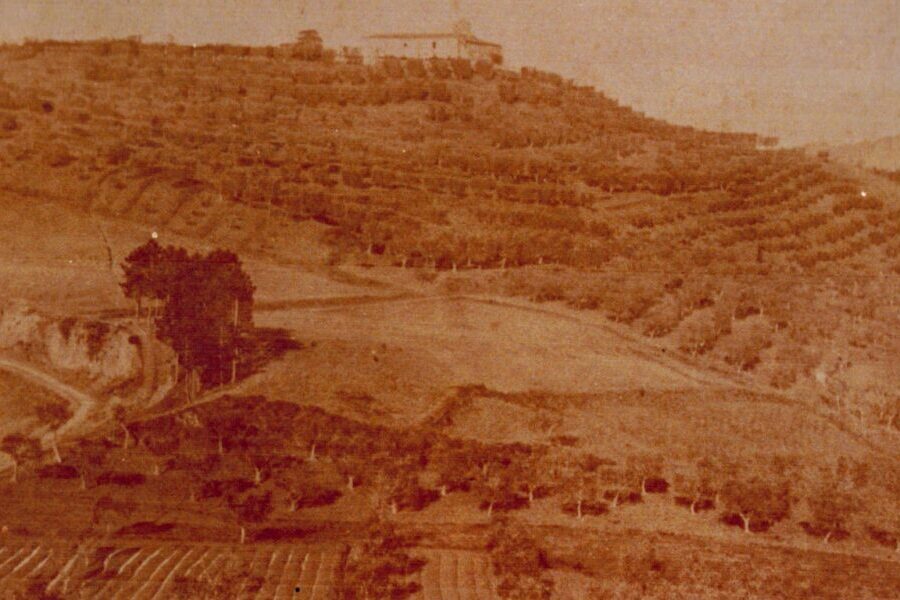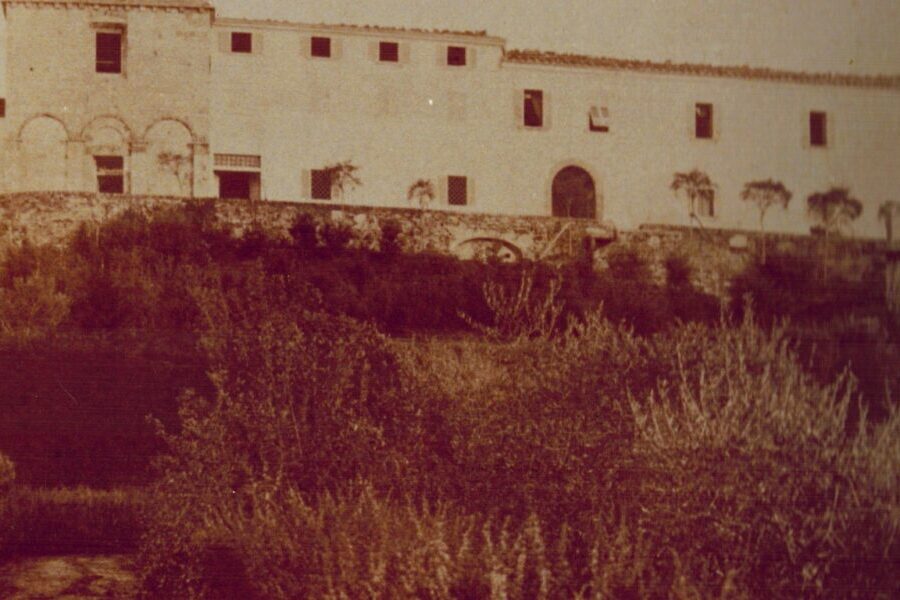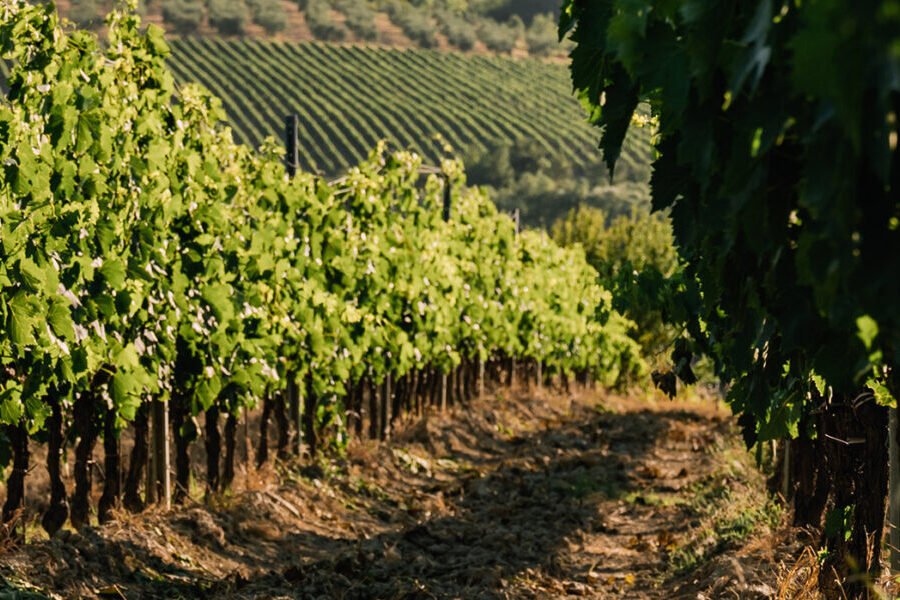OUR SUPPLIERS
Badia di Morrona

HISTORY, STARTING WITH THE ANCIENT BADIA.
The history of Badia di Morrona begins in the very beautiful abbey at the beginning of the 1st millennium AD. Founded by Hugh of the Cadolingi, it was run first by Cluniac Benedictine monks and then by Camaldolese monks. From 1482 it became the summer residence of the Bishops of Volterra, and later, with the unification of the Kingdom of Italy in 1861 and the confiscation of Church property, the abbey saw the passage of various estates and families until the Gaslini Alberti Counts purchased it in 1939.
Egidio, father of the current owners Filippo and Alessandra, worked to restore the Abbey to its former glory. In addition to replanting the vineyards and improving the applied agronomic techniques, work has begun on the renovation and expansion of the winery and barrique cellar historically present in a sort of annex of the abbey. This was in fact the first home of Badia di Morrona wines later replaced in the early 2000s by the new winery in Terricciola.
Thanks to the efforts of the entire Gaslini Alberti family and a very careful conservative restoration, today the abbey has been able to reopen to visitors its cloister, the monks’ refectory, the gardens and the fascinating Romanesque church of Santa Maria a Morrona. The latter holds such noteworthy later works as the Madonna painted by the Master of San Torpè, who was strongly influenced by the likes of Cimabue and Giotto, 18th-century frescoes, and the striking 14th-century olive-wood crucifix.
Since 1939 each generation has played a crucial role in the growth and history of this reality: today Filippo and Alessandra are the third generation to lead Badia di Morrona, and with the contribution of Francesca, Lorenzo and Niccolò, the young new generation of the family, the future of Badia di Morrona is all to be written and discovered.


ESTATE
Set in the nonpareil Tuscan landscape between Pisa and Volterra, Badia di Morrona boasts a full 600 hectares, an estate where woods of cypress, oaks, and holm oaks leave space for 40 hectares of olive groves, and— above all—110 hectares of vineyards rising up the gentle hillslopes near the Cascina river, between Terricciola and Casciana Terme Lari. It was precisely in this part of the estate that the Gaslini Alberti family, when they purchased the property in 1939, came across their first vineyards, eloquent testimony to the area’s long-established and deep rooted viticulture.
Today, the results of these studies and project are evident. Considering red grapes, which predominate on the estate, Sangiovese plays the major role; in fact, a full 60% of all the estate vineyards are dedicated to this “Tuscan monarch,” with some parcels planted to Cabernet Sauvignon, Cabernet Franc, Merlot, and Syrah as well.
Both of these elements are landmarks in the territory, marking a perfect balance between past and present that fascinates visitors.

ICONIC VINEYARDS
The combination of various field research projects has led to the identification over time of vineyards which, thanks as well to their underlayment of diverse soils, each exhibit distinctive and remarkable personalities.
VIGNA DISPERATO
The 10-hectare Vigna Disperato, sited on the east slope of the estate, is planted predominantly to Syrah. This vineyard, with its not-quite felicitous name, constantly amazes with the number and large size of sea-shells that continue to surface every time the ground is worked. The grapes here go to produce IGT Toscana Taneto.
N’ANTÌA VINEYARD
The singular N’Antìa cuvée owes its origins to a vineyard over 30 years old, one of the estate’s historic parcels and one with an extraordinary aptitude for interpreting the estate terroir with complexity and depth. This six-hectare vineyard produces Cabernet Sauvignon, Cabernet Franc, and Merlot from its clay- and travertine-rich soil. It faces southeast, right towards the ancient Badia di Morrona complex, the cellar where the grapes from this vineyard were initially vinified; hence, the special relationship today between monastery and vineyard.
VIGNAALTA VINEYARD
VignaAlta is a stupendous vineyard whose name suggests its position, atop the highest hill on the estate. Reached by a picturesque, white-coloured path, it covers some 8.5 hectares and lies in compact sand and fossil soils with significant content of white Marmettole di Carrara rock.Facing south are alternating parcels of Sangiovese, Cabernet Franc, Merlot and Canaiolo, with the finest clusters of the former variety dedicated to the production of Badia di Morrona’s much sought-after cru, VignaAlta Terre di Pisa DOC.


VINEYARDS
This may be a lesser-known corner of Tuscany’s wine universe, but it is an area that vaunts long-respected vitivinicultural qualities, amply testified to by the activities of the Conti Gaslini Alberti family, who have owned the Badia di Morrona for almost a century. They have always held a firm belief in the inherent superiority of this terroir and today they continue to pour their energies into fashioning its future.
A stroll through the estate vineyards immediately encounters ancient, priceless soils laden with travertine fragments and fossil shells that trace a fascinating journey back in time towards the very origins of the area.
Raising one’s eyes a few centimetres brings into view luscious clusters of Sangiovese, icon of Tuscan winegrowing, as well as the most important international varieties, portraying the twin and complementary sides of Badia di Morrona’s winemaking philosophy, which is thus able to offer a comprehensive portrait in wine of its terroir.
The vines benefit from a local climate whose marine breezes temper hot daytime temperatures and prevent overly-moist conditions in the vinerows.In this one-of-a-kind mosaic of soils, an authentic “geologic treasure-chest,” clay predominates, with pebble content scarce, but components that one encounters, cheek by jowl, are sand, soft greystone, river cobbles, local alberese marl, and even slabs of travertine emerging from the ground, but—above all—fossils from the Pliocene through the Pleistocene, abundant evidence of ancient seabeds here in the valley.

Badia di Morrona
VIDEOS
Handpicked Wines
Where Every Sip is a Stroll Through Each Vineyard.
Sign up for our NEWLETTERS
Keep updated with the latest and greatest from our wonderful world of wine.
